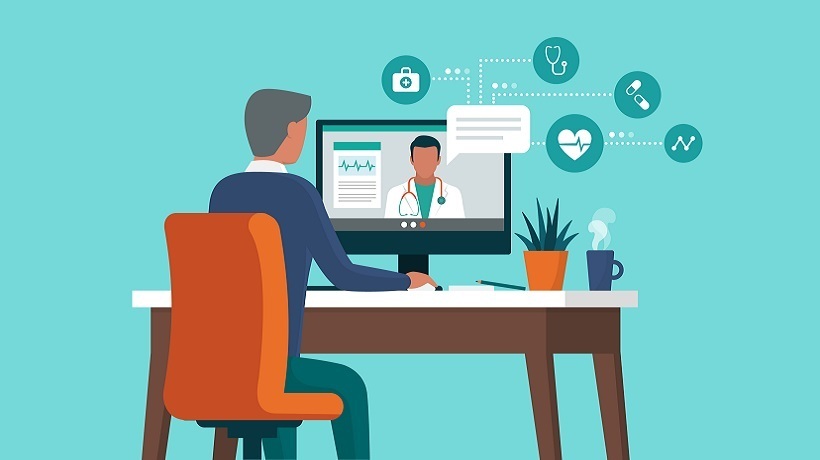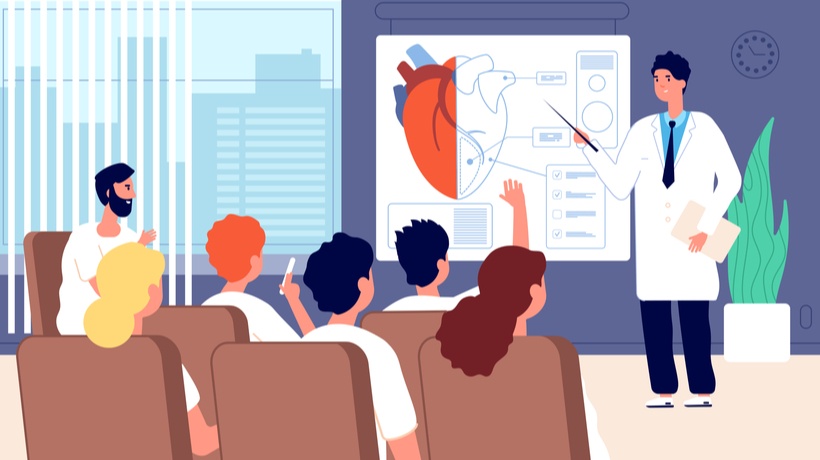Learn Why The Future Of Health Education Is In Telehealth
Two very large industries, education and healthcare, needed to make major changes to continue serving their students and patients due to COVID-19 and the stay-at-home orders that came with it. Telehealth and eLearning were both in existence prior to the coronavirus hitting U.S. soil, however, they were simply options as opposed to necessities. That changed, and healthcare and education both moved a lot of their operations to screens, and both realized that there are some real benefits to both for all parties involved.
eLearning is extremely beneficial when it comes to reaching dispersed audiences, and the future of health education is in telehealth.
Traditional Education
The vast majority of healthcare professionals want their patients to receive the best possible care that a given situation allows. That quality starts with health education. As many parts of the healthcare world have gone digital (electronic health records, appointment setting systems, check-ups), it’s only sensible for the educational side to follow suit.
As far as traditional education goes, such as nursing degrees and doctorates, the future of telehealth actually makes it feasible to pursue one of these professions and continue to live a somewhat involved life outside of the demanding classwork. With online options for non-traditional students (and even traditional ones), flexibility allows for people with families, students who need to work to pay rent, and those unable to commute to actually have options for pursuing their healthcare degrees.
Some go as far as to say online education in the healthcare industry allows for more engaging studies that involve internet databases and video examples of given procedures and things of the like. As an added bonus, online education tends to be cheaper, thus further enlarging the base of people who can pursue a health field education.
Ongoing Education
With changes in healthcare happening by the minute, telehealth also makes it possible to expedite and streamline education for those people already in the field. Seminars on new methods of care can literally have an infinite crowd when they are done digitally and, on a smaller scale, weekly meetings for nurses and doctors who work crazy schedules and can’t always attend can check in or, at very least, watch a recording of said "update" meetings.
Online courses are another great way to stay up to date with what’s going on in telehealth and healthcare technology. Several professors of online classes are front line researchers in this field and can provide insight that may not be widely available through regular media.
For Patients
Though not expected to pursue a degree or jump on a teleconference regarding new treatment strategies for a given group, patients can still directly benefit from telehealth as well. With concierge healthcare gaining popularity by the minute, the ability to bring patients closer to their providers and provide a way for more frequent check-ins make telehealth very enticing to those patients who pay yearly rates for their healthcare services. A simple, “Hey doc, can you look at this?” can now be done in seconds via the internet, saving both parties time, travel, and most importantly money, without sacrificing the quality of care.
Advances in imaging technology also make a slew of procedures that used to be strictly in-office now available to patients via telehealth. Ultrasound imagery is now sharable online, and telehealth conferences can save rural expectant mothers from driving hundreds of miles just to see results of procedures they already drove hundreds of miles for. And, the very nature of the computer-based meetings allows for healthcare professionals to share links to studies and other forms of information in real time with the click of a button.
Quality Care
Quality care is the goal of most people who don scrubs, and given the educational possibilities that eLearning provides to healthcare professionals, improvements in care can be shared with an entire team, hospital, or industry in seconds. This education allows professionals to deliver the most up-to-date care for a given ailment.
Where patients often have to sacrifice quality is when the wallet gets involved, but telehealth not only makes it cheaper for professionals to further their education but even more importantly, it allows patients to cut their costs of care, ultimately improving their options. Telehealth is a growing field because of its accessibility and its initiatives to make healthcare more equitable for all.









